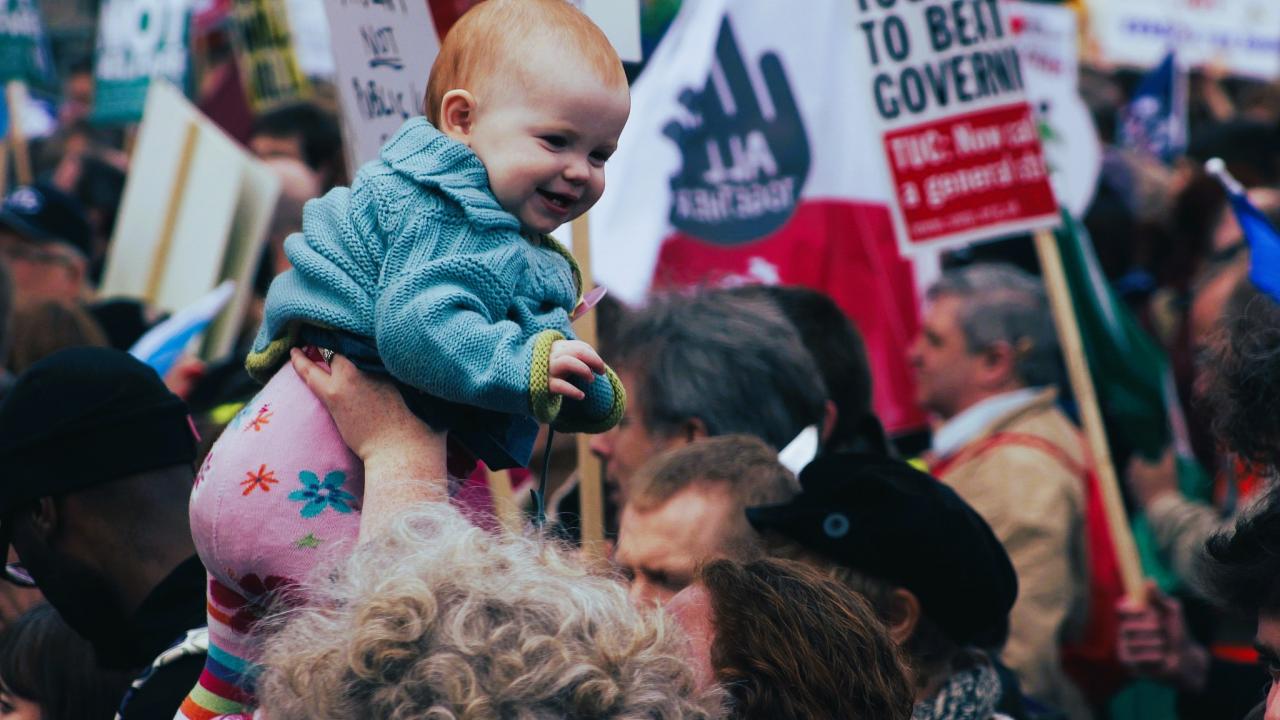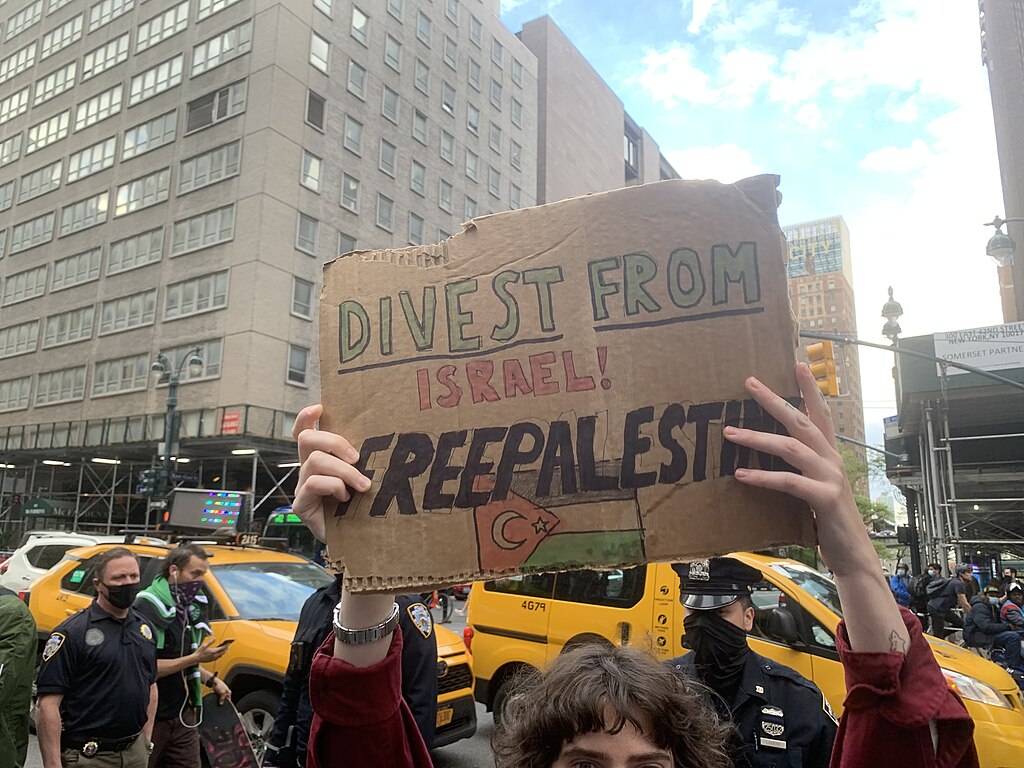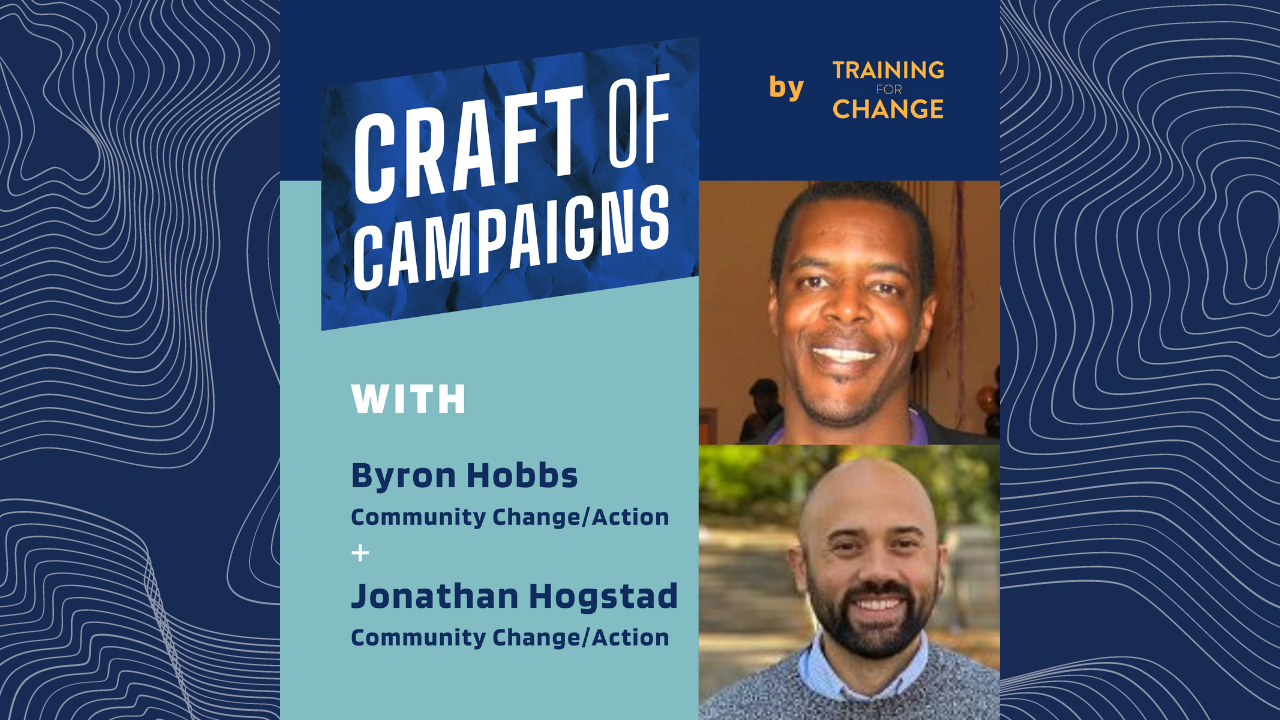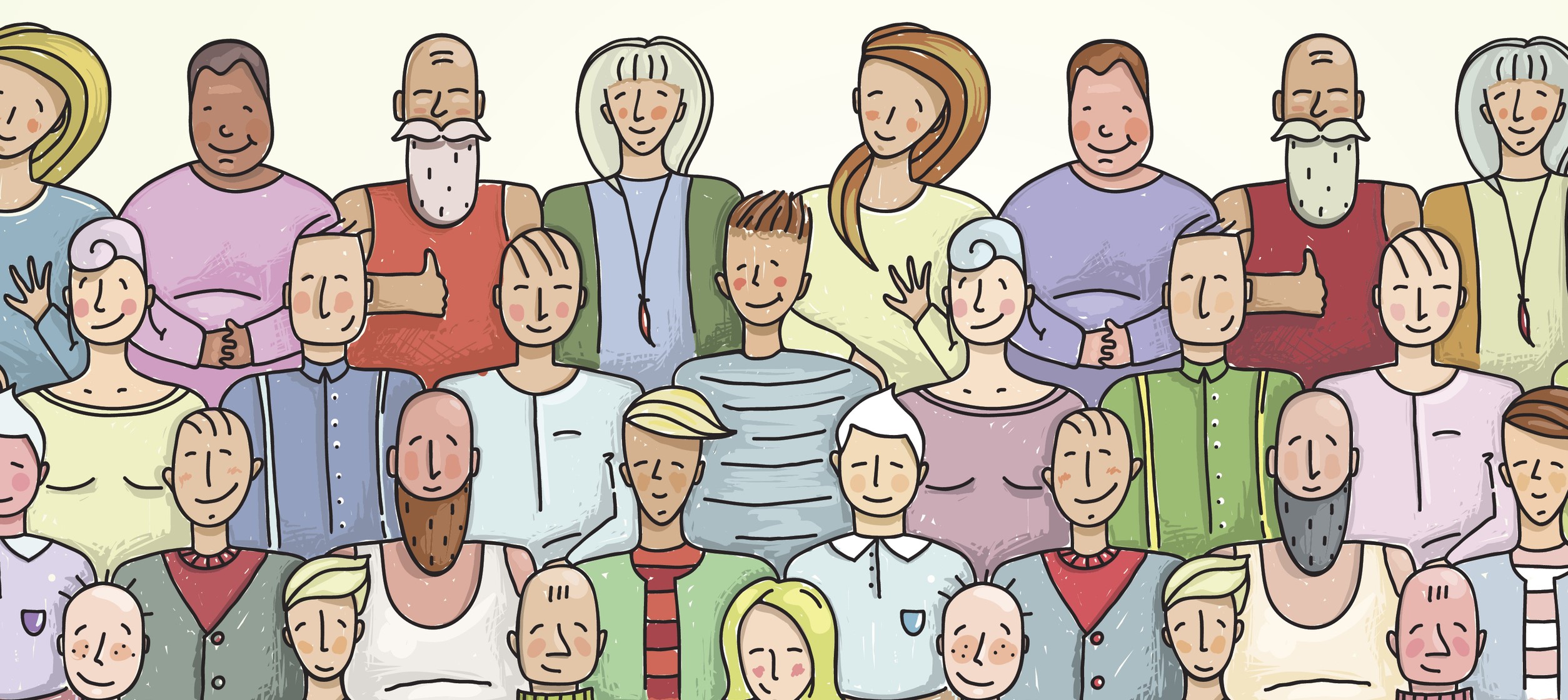The United States is the only high-wealth country without guaranteed paid family or medical leave for workers with a range of needs—and it’s one of a very small handful of countries in the world that does not guarantee paid leave to new mothers. In this case, American exceptionalism fuels multiple harms and lost opportunities for workers, children, older and disabled adults, businesses, and the US economy. In this conversation between Vicki Shabo, a senior fellow focused on gender equity, paid leave, and care policies at New America’s Better Life Lab, and Dania Rajendra, senior strategist at Social and Economic Justice Leaders Project and a prior contributor to The Forge, the two discuss this brand of American exceptionalism, the relationship between oligarchy and roadblocks to national paid leave, and the bright spots of progress that have occurred at the state and federal levels that could pave the way for national progress. They also discuss the positive effects that nationwide paid leave would have, for workers and families as well as for the political system.
Dania: Vicki, tell us what kind of policy you’ve been fighting for over the last fourteen years.
Vicki: Much of my time has been focused on advancing paid family and medical leave programs, nationally and at the state level. This is necessary because what the private sector provides has fallen far short of what workers need. Today, just 27 percent of workers have access to paid family leave through their jobs. And the disparities between higher-paid professional employees and lower-wage hourly workers’ access rates are getting bigger, not smaller. In 2023, there was a ten-to-one difference between the highest-wage workers and the lowest-wage workers in terms of access to paid family leave, but even among higher-wage workers, only about half have access to paid family leave. And, as I’ve written about elsewhere, higher-wage workers are not immune to the precarity that low-wage workers have always faced.
In addition, only four in ten workers have access to personal medical leave that they can use for a serious health condition through an employer’s short-term disability insurance policy. And about thirty million workers—disproportionately lower-wage workers—are not even able to have the security of a single paid sick day.
Wages, benefits, workplace power, flexibility, and worker voices are all concentrated at the top, and hourly part-time workers who are paid lower wages are more likely to be women and people of color. Those are the people who are also less likely to have access to paid leave.
So, in order to create baselines for access, we are fighting for paid family and medical leave programs that would guarantee every working person, no matter where they live or what job they have, the ability to take a number of weeks or months to care for themselves or address their own serious health issues, to care for a new child, or to care for a seriously ill loved one. This is the type of paid leave social insurance policy that’s in place now—or that has passed and will soon be in place after implementation is complete—in thirteen states and Washington, DC.
Dania: Vicki, it must have been wild to have been involved in the long-term campaign for policies to ensure that every person eventually has paid time to care for their loved ones or themselves when they need to use it—and then to watch COVID-19, and the recurring economic crisis and so-called labor shortage, spread the need for such policies across everyone’s world.
Vicki: So many people are still living through an unprecedented health crisis, and we have an ongoing care crisis that’s much broader than just COVID, due to an aging population and a shrinking family caregiver base. There is stark evidence about how important women are to the economy, and how sensitive to disruption women’s labor force participation was during the pandemic because we lack policy supports and standards. But policymakers haven’t yet fully connected the dots. We still don’t have the policies that address those challenges—so that is obviously very, very disheartening.
Dania: But there’s been progress, right?
Vicki: Yes! Dramatic progress. When I first started working on paid family leave in 2010, there were only two states that had passed paid family leave programs that covered private sector workers: California and New Jersey. They had both built on existing programs that had been in place for decades for personal short-term disability. Now we have thirteen states, plus Washington, DC, with paid family and medical leave programs either currently paying benefits or preparing to do so between now and 2026—and hopefully, within the next year, we’ll have a couple more. So that’s exciting. We also have a paid parental leave benefit for federal workers now, which was enacted in 2019; some states and cities have the same for their own state workforces.
Similarly, there were only two municipal paid sick days laws when I started working on this issue—these are laws requiring employers to allow workers to accrue paid sick leave. And now we have more than fifteen states and two dozen localities with paid sick days laws. That’s progress for sure. There is executive action for federal contractors with respect to paid sick days that the Barack Obama administration enacted, and that is still in place.
These policies and programs affect the lives of tens of millions of people, but they still fall far short of what every working person in this country needs, because we don’t have federal policies that apply to everyone in the private and public sectors for the full range of necessary and important personal and family care reasons.
Dania: The country nearly passed national paid leave through Build Back Better, correct? But it failed. When you think about oligarchy in our political system and the opportunities and challenges of ensuring that everyone has the time and money they need to care for a loved one, how does oligarchy show up?
Vicki: Yes, the Build Back Better Act included twelve weeks of paid leave, which then shrunk to four by the time the bill passed the House of Representatives in November 2021. But paid leave, along with all other care policies, didn’t make it into the reconciliation bill that passed the Senate in August 2022. It was a huge blow.
As for oligarchy, the clearest way it shows up is in opposition to policies themselves. Sometimes businesses and organized business interests say, “Oh yeah, we believe that there should be paid leave, but it’s something that should be handled workplace by workplace.” They like to say that a “one size fits all” solution is not appropriate. I wouldn’t characterize it that way, obviously—what we need is a baseline standard. But their anti-regulatory language reinforces myths that free enterprise and deregulation will be the things that will get workers what they need. And we know that that is not true.
The other way that oligarchy showed up in the Build Back Better fight was in opposition to taxes. At the end of the day, you could have businesses and trade associations giving lip service to the idea that people should be able to take care of themselves and their loved ones with paid family and medical leave, and about the importance of childcare in particular—but these same interests spent tens of millions of dollars in lobbying and in campaign donations to stop the revenue streams that would lead to these exact policies.
Dania: Tell me a little about the organizing that has happened in the paid leave space, especially with respect to federal paid leave in Build Back Better. How did the fight bring people together, and what were the challenges in bringing people together across basically every form of difference that we have in our society to fight for a policy we might describe as a basic human right?
Vicki: Because this policy has the potential to touch every household, everybody has a stake in it. That’s a strength, but it’s also a challenge, because there are so many constituencies that are part of this fight, many of whom also have other priorities; that means there are many people with diffuse interests and differences in messaging.
But the beauty is that anyone can be part of this. There are grassroots groups across the country, a lot of them that are affiliated with the Family Values @ Work network, whose partners have been working on paid leave at the state level for a long time, and others like Poder Latinx. There are also national activist groups like MomsRising that organize online and on the ground and that have been working on paid leave for more than a decade. There were associations like the American Academy of Pediatrics and the American Cancer Society Cancer Action Network that had national and local engagement. Main Street Alliance and others have done a great job of organizing small businesses to speak out to undercut some of what we hear from corporate interests, saying that they don’t want policy like this or that we don’t need a federal policy.
There’s broad public support for paid family and medical leave, for public investments in paid family and medical leave, for devoting taxpayer dollars to paid family and medical leave. In fact, 80 to 85 percent of the public and of voters are supportive of this policy, usually including about two-thirds of Republicans, 75 percent of independents, and 90 percent of Democrats.
Paid leave, childcare, and home care were actually more popular than almost any policy that did pass as part of either the infrastructure bill or the Inflation Reduction Act, other than prescription drug reform. All of these policies would demonstrably touch people in very personal ways, with benefits that would have been economic and individual as well as political. These are highly popular policies that would have made a tangible difference to people.
But support and urgency don’t always go together, and the political dollars needed to create accountability around this issue have always been a challenge relative to other high-profile issues.
Another challenge is practical: People who are most impacted—who are providing care in the moment—often don’t have time to advocate for policy improvements. Parents who are surprised that there’s no paid leave to care for their new baby are incensed, and they may remain incensed going forward. But if you have limited bandwidth for what you can pay attention to, is this the one thing that you’re going to pay attention to? The same is true if you’re caring for a seriously ill family member or navigating your own cancer diagnosis, for example.
Dania: Just to pause—that, too, is a feature of oligarchy.
Vicki: West Virginia Democratic senator Joe Manchin, one person in particular who stood in the way of paid leave and other care policies being included in a final reconciliation bill, is himself a product of oligarchy. He’s a rich, white, older male who is a father and a grandfather, but isn’t a caregiver and fundamentally doesn’t see care as essential to the economy.
The disconnect between what public opinion showed people wanted and what fifty Republicans and a couple of Democrats were able to block just reinforces that our legislature is not democratic and the features of undemocratic institutions that undermine popular will and democracy.
In the debate overall, we did see far more attention, recognition, and understanding among policymakers that care issues were essential to getting people back to work—and that they were essential to fighting inflation by making care more affordable and making the need to take leave more affordable and still be able to pay for the basics. I guess that was a good thing, though it would be better if we didn’t have to be quite so instrumental about it all. We also need paid leave because it provides dignity and shows that people and relationships have value.
But oligarchy tends to be highly patriarchal and dominated by people who are not caregivers. It serves their concentration of power for our society to continue to think of caregiving issues as individualized and as individual responsibility instead of squarely within the public realm or within the realm of what public policy should be addressing.
What that tells us, as advocates and organizers, is that we have a narrative challenge and a cultural challenge when it comes to creating as much equivalence and salience for paid leave as a public issue and a public good as health care, education, or climate policy have. These issues are seen and believed to be squarely within the public realm and—at least for legislators—within the realm of what public policy should be addressing. We also have resource challenges in the political process, relative to these other issues, where political accountability mechanisms have been built, invested in, and sharpened over time.
Dania: Even though paid leave would benefit every human, it strikes me that there’s not leverage in the same way as constituencies such as tenant and debtor protections that labor law scholars Kate Andrias and Benjamin Sachs name because constituencies are diffuse. What do you think about that?
Vicki: Right. I could easily make the argument for a collaborative of impacted workers, medical providers, health insurance companies, and small businesses coming together to advocate for paid leave. Because, for each of those entities, there’s an economic value in creating a public policy that encourages and makes it possible for people to afford paid family leave or to have paid leave provided to them. For workers, the interest is obvious. For medical providers, it’s people getting the care they need and seeing better outcomes for their patients.
For health insurance companies, it’s keeping their costs down by having people use preventive care and by getting things treated more quickly. Yet that stakeholder group has not come to the table in any significant way to shape or advocate for federal policy.
For small businesses, we know that they can’t compete with larger businesses and that public policies that guarantee paid leave through payroll-tax-funded programs are a benefit to them. We have seen examples where some of those stakeholders have been a part of coalitions, but not in aggregating or demanding power in the way that shows up, for example, in the Corinthian Colleges case [a campaign by Debt Collective] or in Community Reinvestment Act demands or anything like that. Part of it is that we don’t have the law in place yet, so there’s no lever.
I know a number of larger companies that have run analyses that show that having a public program in place would actually be cheaper for them than providing leave for their employees. So, in some ways, it’s like a corporate handout to provide paid leave publicly. The other place where corporate interests would be served by having a public policy is for companies that already provide benefits and have good protections and policies for their workers. These good actors are essentially absorbing the externalities of other companies not having those benefits, in the sense that people are part of families and family webs. The companies that are providing benefits actually have a stake in not just their own policy but broader public policy or policy standards. Yet it’s rare to see that argument being made. There are some who do it, but it’s rare.
When business gets involved, it’s because advocates have asked them to. And it’s rare to see companies advocating on their own or organically for a policy that would arguably help them as well as their workers.
What we need is to aggregate and mobilize all of these interests together, which requires more resources, especially more sustained resources to build and leverage power. That way, next time a window opens, we have the power - numerically and narratively - to defeat the oligarchic opposition and pass national paid leave.
Dania: For the most part, what we saw from business was opposition, right?
Vicki: We saw business lobby and multinational company opposition, yes. We also had one thousand businesses and business leaders sign on in support of paid leave. But, again, most of the opposition in the Build Back Better fight surfaced on the tax and revenue side from large, moneyed interests. What underlies their opposition at its core, I think, is really opposition to regulations or any kind of attempt to set rules for workplaces.
Dania: It’s an oligarchic ouroboros.
Vicki: Any incursion into rules that get in the way of an unfettered employer-employee relationship are objectionable to them, even if the policy that’s there actually serves the interest of both workers and employers. There are also cultural underpinnings of misogyny, racism, and Christian nationalism here, which is another source of opposition.
Certainly all of the forces on the Right that are anti-abortion and anti-trans believe that women should raise babies and stay at home, unless they’re Black or immigrants. Then they should obviously be working every second without actually having childcare or health care, according to these folks.
Often, the progressive movement fights each individual battle separately. I think that’s changed a lot since the Donald Trump years, when people did lock arms and we all started to realize how interconnected our fights are and act like our fights are interconnected. The fight for care policies like paid leave are a place where we need more coming together to recognize the nature of both economic and cultural opposition to public investments and public programs that support care, work, and family.
For example, with respect to corporate accountability, since the Dobbs decision, it’s been really impressive to see how companies have at least said that they are creating protections for their own employees. Now, whether they weigh in on public policy is a different matter, and I think that’s where things start to break down. But these fights—reproductive freedom and work-family and care policies—should be deeply connected, and companies should fight for all of these things.
We’ve very rarely seen corporate leadership in the realm of advocating for public policy, usually in their own corporate practice or in corporate commitments. The Equality Act might be one counterexample to that, where LGBTQIA+ rights groups have done a good job of aggregating corporate pressure for public policy change. There are also some good examples in the climate space.
We’ve tried really hard in the gender equity space with respect to workplace rights and policies, but we get in the way of companies not wanting public policy to affect their own internal operations. And that’s where things get really tricky.
We need more accountability mechanisms. We usually use carrots, and we haven’t instilled enough fear, with a few exceptions. Color of Change has done a great job in getting companies to resign from the American Legislative Exchange Council and on other campaigns. But there are power differentials, and to the extent that companies get scared about reputation or anything like that, they’re inherently conservative, and that favors nonintervention and the status quo, which is essentially just upholding all of these systems that we’re trying to push back against.
Dania: Before we end, let’s imagine a future in which every working person has the time and resources they need to care for the loved ones in their lives who need it. What benefits might accrue to them politically? To a participatory democracy we might imagine as better serving us all?
Vicki: If we had a system in which every working person were able to continue to keep their job and have the income support they need to care for a new baby or a sick loved one or themselves, a few things would happen.
First, there would be huge economic benefits that allow for a better and more robust participatory democracy.
Second, a paid leave program that’s well-executed and well-run would have great potential to reinstall trust in government and help people see the relevance of government in their lives—and that could have spillover effects to other public policy innovations that a whole range of people are pursuing.
Third, I think there would be political benefits for politicians who are willing to champion and fight for this policy and make sure it’s well run. Bill Clinton has spoken eloquently about how the Family and Medical Leave Act, which passed thirty years ago and was the first bill he signed, is the law that people thank him for more than anything else he did, because it intimately touched their lives and allowed them to be there for the people they loved. And that was just unpaid leave, and it excludes more than 40 percent of the workforce, and it’s flawed, and that’s part of what we’re trying to fix—but still, it made a tangible difference for people, even though it had shortcomings.
The fourth thing is that people would start to see themselves as beneficiaries of this program, and we would create a broad base of beneficiaries who have some accountability for the continued functioning of the program. I think that’s all for the good. You can imagine mechanisms being built into a policy, like reporting requirements and other ways of making sure that people are getting what they need, and also embedded intermediaries that help potential beneficiaries see that this policy exists and is there for them. I think that has some potential important feedback loops for, again, people to see the relevance of this policy in their lives, and also to create more intersections between citizens and government and community institutions that are helping to bridge the gap between the two.
Dania: And the recognition of care work as work.
Vicki: Yes. Care work is work. Unpaid labor is labor, and it’s valuable.
Dania: I can’t think of a better place to end.





